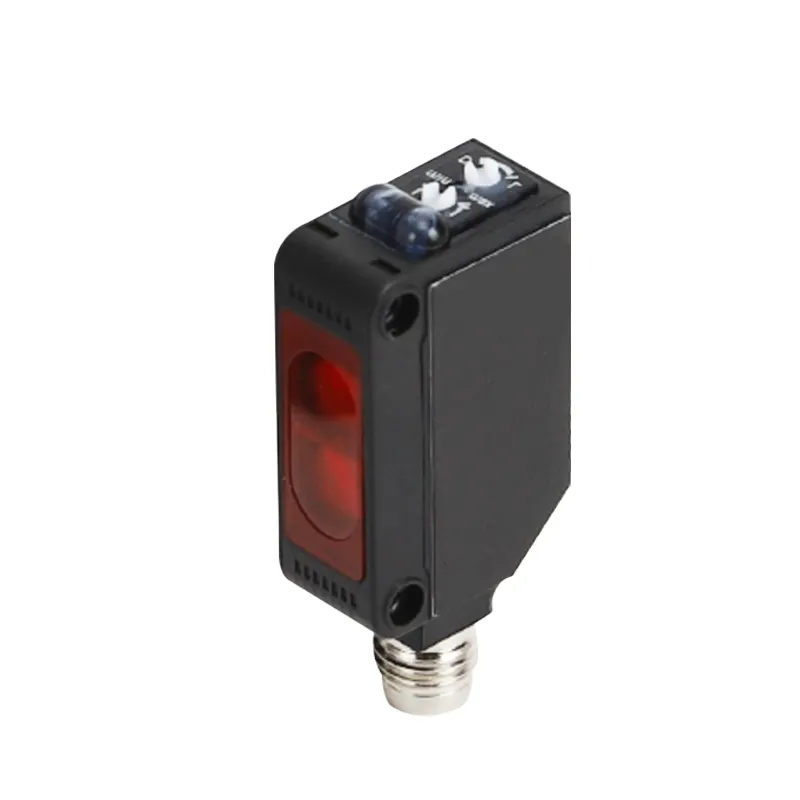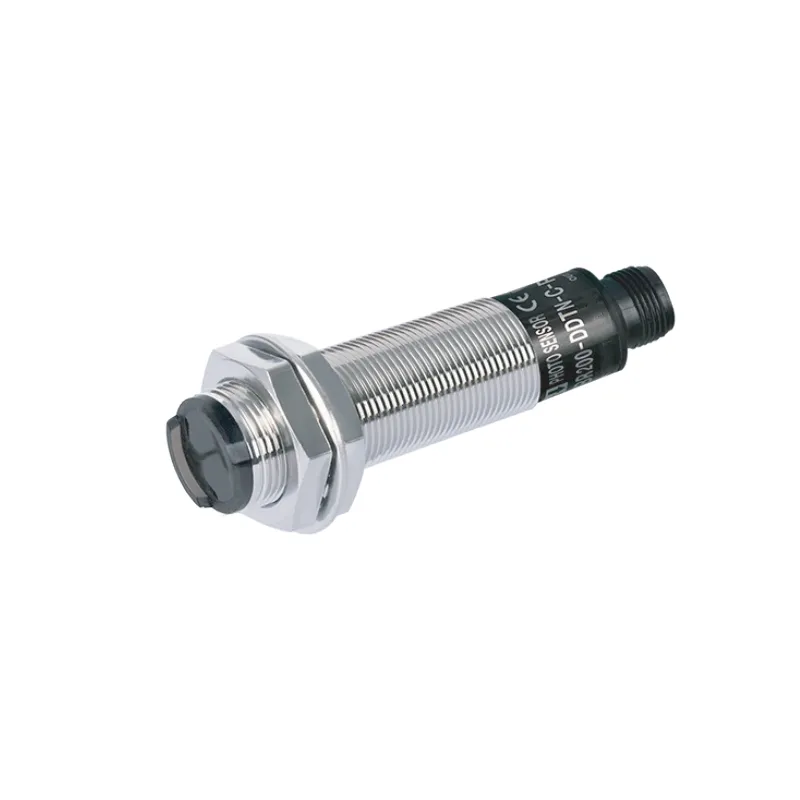Understanding the Role of Photoelectric Switches in Modern Automation
In today’s fast-paced industrial and commercial sectors, photoelectric switches have become an essential component for automation systems. These compact yet powerful devices are designed to detect the presence or absence of objects without physical contact, making them ideal for various applications ranging from manufacturing lines to security systems. With the advancement of sensing technology, photoelectric switches are now more reliable, precise, and adaptable than ever before.
Overview of Photoelectric Switches
Basic Operation Principle
Photoelectric switches operate based on the interruption or reflection of a light beam. They consist of a light emitter and a photo detector. When the light beam is interrupted or reflected back by an object, the switch activates or deactivates an electrical signal. This non-contact detection method helps reduce mechanical wear and extend device longevity.
Key Components and Variants
Modern photoelectric switches come in different configurations including through-beam, retro-reflective, and diffuse-reflective types. Each type serves specific detection needs and varies in range, response time, and installation complexity. These variants are commonly used across industries such as logistics, packaging, and electronics.
Major Types of Photoelectric Switches
Through-Beam Photoelectric Switches
Through-beam photoelectric switches use separate transmitter and receiver units. The object is detected when it passes between the two units, blocking the beam. This type offers the longest sensing distance and high accuracy, making it ideal for applications requiring precise object detection over long distances.
Retro-Reflective Photoelectric Switches
In retro-reflective models, both the emitter and receiver are housed together, and a reflector is placed opposite the unit. When an object interrupts the reflected light path, detection occurs. These are simpler to install than through-beam types and are commonly used in conveyor systems and access control setups.
Diffuse-Reflective Photoelectric Switches
Diffuse-reflective switches combine the emitter and receiver in one unit, and detection is achieved when light reflects off the target object and returns to the sensor. These are ideal for short-range applications and scenarios where it is impractical to place a separate reflector.
Specialized Photoelectric Switch Technologies
Background Suppression Technology
Advanced photoelectric switches often feature background suppression, which allows the sensor to distinguish between the target object and the background. This is particularly useful in cluttered environments or when detecting dark or low-reflectivity materials.
Laser and Fiber Optic Photoelectric Switches
Laser-based photoelectric switches offer high-resolution detection suitable for small or thin objects. Fiber optic models, on the other hand, are designed for use in tight or hazardous environments, providing flexibility in installation and enhanced durability.
Applications in Industrial Automation
Manufacturing and Assembly Lines
Photoelectric switches play a crucial role in ensuring smooth operations on manufacturing lines. They can detect the presence of components, monitor fill levels, and confirm part orientation. Their ability to operate without physical contact is especially advantageous for fragile or sterile products.
Packaging and Logistics
In packaging facilities, photoelectric switches are used to count items, verify label placement, and monitor box positions on conveyor belts. Their rapid response time helps maintain high-speed operations without sacrificing accuracy.

Use in Safety and Security Systems
Access Control and Safety Barriers
Photoelectric switches are widely used in access control systems, where they detect the presence of people or objects at entry and exit points. In safety barriers, they serve as light curtains to prevent accidents by stopping machinery if the light beam is broken.
Surveillance and Motion Detection
These sensors are also incorporated in surveillance systems to detect motion or unauthorized entry. Their sensitivity and ability to work in various lighting conditions make them reliable for both indoor and outdoor security applications.
Benefits of Using Photoelectric Switches
Non-Contact Operation
One of the most significant advantages of photoelectric switches is their ability to detect objects without physical contact. This not only reduces wear and tear but also enables the detection of delicate or hot materials.
High-Speed and Long-Range Detection
Photoelectric switches offer fast response times and can detect objects over long distances, depending on the model. This makes them suitable for dynamic and large-scale operations that demand speed and precision.
Considerations for Choosing Photoelectric Switches
Environment and Installation Conditions
When selecting a photoelectric switch, it is important to consider the operating environment. Factors such as dust, moisture, and temperature can affect performance. IP-rated enclosures and built-in filters can help ensure consistent operation in harsh conditions.
Object Characteristics and Detection Requirements
The color, size, shape, and material of the object can influence detection reliability. Selecting the appropriate type of photoelectric switch based on object characteristics ensures accurate and repeatable performance.
Integration with Control Systems
Compatibility with PLCs and Controllers
Photoelectric switches are designed to integrate seamlessly with programmable logic controllers (PLCs) and other automation controllers. This integration allows real-time data collection and streamlined process control.
Smart Sensor Capabilities
Modern photoelectric switches often come with smart features such as self-diagnostics, adjustable sensitivity, and digital displays. These features facilitate easier setup and maintenance while enhancing system efficiency.
Emerging Trends in Photoelectric Switch Design
Miniaturization and Compact Designs
As space becomes a premium in automation systems, manufacturers are developing more compact photoelectric switches without compromising performance. These miniaturized sensors are ideal for use in robotic arms and compact machinery.
Wireless and IoT Connectivity
Some of the latest photoelectric switches support wireless communication and Internet of Things (IoT) protocols. This allows for remote monitoring and diagnostics, reducing downtime and improving operational transparency.
Frequently Asked Questions
How do photoelectric switches differ from proximity sensors?
Photoelectric switches use light to detect objects, while proximity sensors typically use electromagnetic fields or capacitance. This gives photoelectric switches longer detection ranges and faster response times.
What is the maximum sensing distance of a photoelectric switch?
The sensing distance varies by type. Through-beam photoelectric switches can detect objects up to several meters away, while diffuse-reflective types are limited to shorter ranges.
Can photoelectric switches detect transparent objects?
Yes, certain models are designed to detect transparent materials such as glass or plastic. These usually incorporate special filtering or polarized light to enhance detection.
Are photoelectric switches suitable for outdoor use?
Many photoelectric switches are rated for outdoor use with proper IP protection. It's important to choose models specifically designed to withstand exposure to sunlight, rain, and temperature fluctuations.
Table of Contents
- Understanding the Role of Photoelectric Switches in Modern Automation
- Overview of Photoelectric Switches
- Major Types of Photoelectric Switches
- Specialized Photoelectric Switch Technologies
- Applications in Industrial Automation
- Use in Safety and Security Systems
- Benefits of Using Photoelectric Switches
- Considerations for Choosing Photoelectric Switches
- Integration with Control Systems
- Emerging Trends in Photoelectric Switch Design
- Frequently Asked Questions

